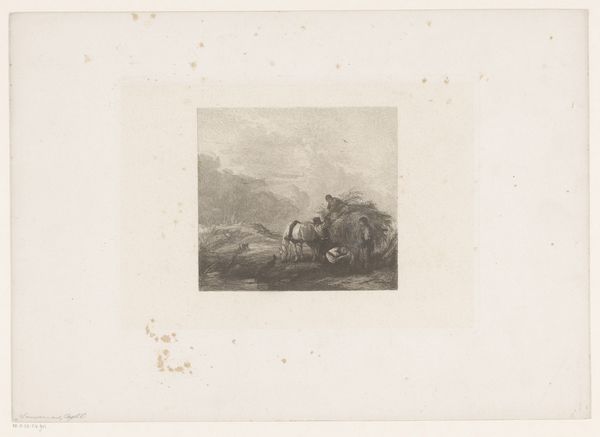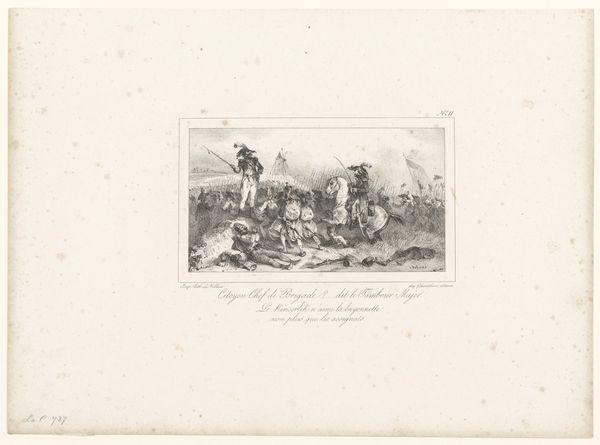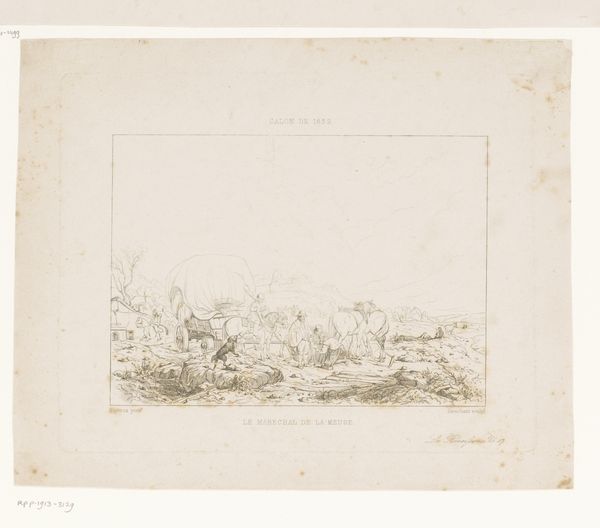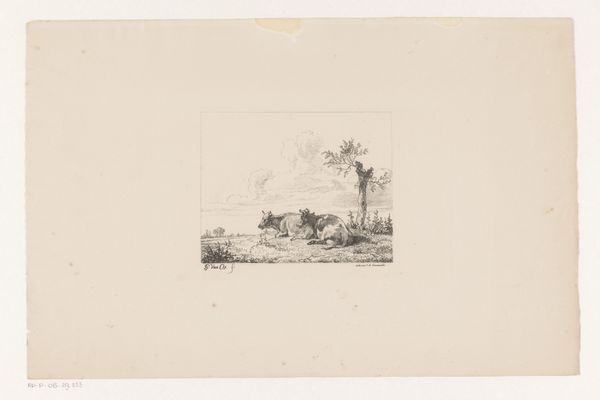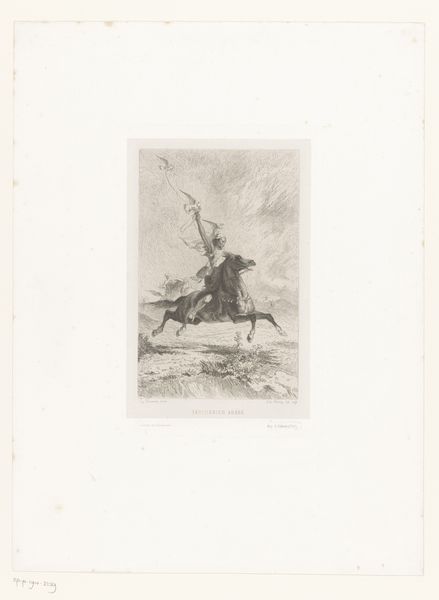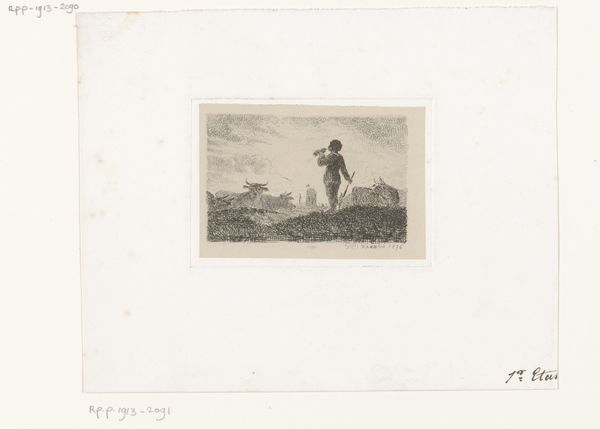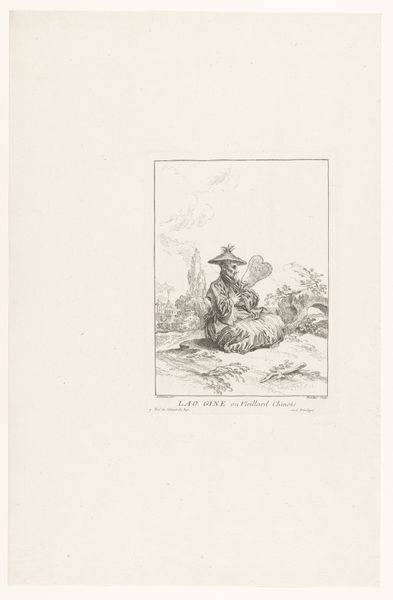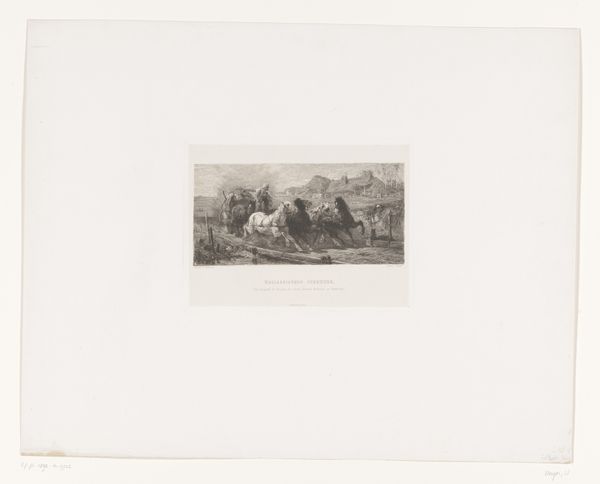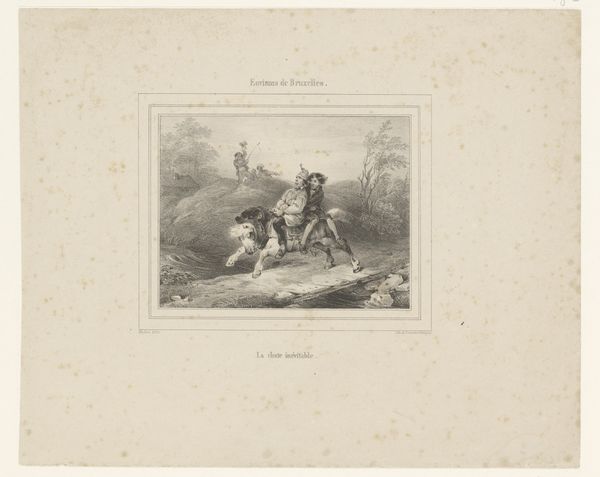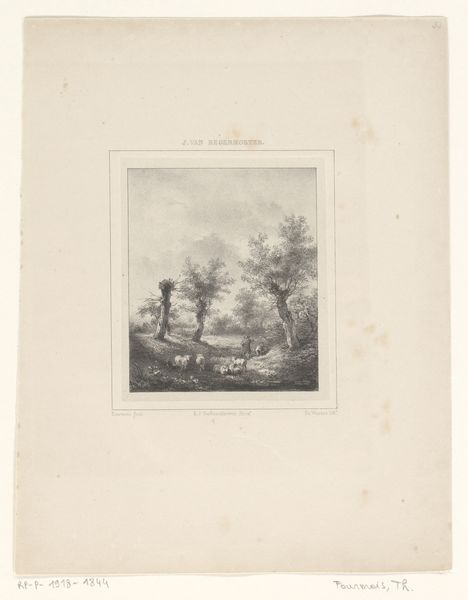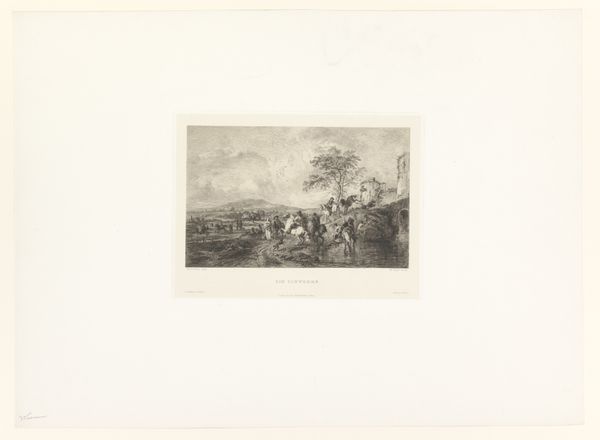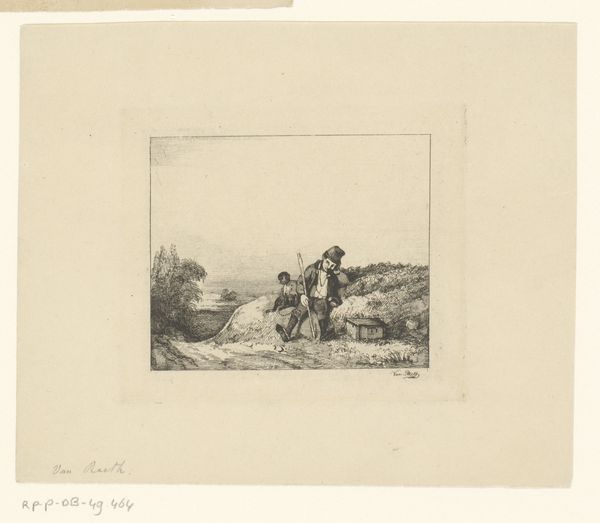
print, etching
#
portrait
# print
#
etching
#
landscape
#
etching
#
figuration
#
romanticism
#
genre-painting
#
history-painting
Dimensions: height 247 mm, width 338 mm
Copyright: Rijks Museum: Open Domain
Editor: So, here we have Nicolas Toussaint Charlet’s etching from 1835, titled "Napoleon bekijkt zijn troepen vanaf een heuvel" – "Napoleon Viewing His Troops from a Hill". I’m immediately drawn to the texture achieved through the etching process, particularly the way it captures the landscape and the almost overwhelming mass of soldiers in the distance. What do you make of it? Curator: This work brings up the socio-economic realities of printmaking in the 19th century. Etchings like these democratized art. How were images of Napoleon being disseminated and consumed by a wider public? This wasn't oil painting for the elite, but a reproducible image, available at a lower cost. It fed into, and was fed by, a burgeoning market for printed imagery. Who was buying this print? Editor: That’s a good point! The reproducibility factor makes me think about accessibility and how it perhaps shaped public perception of Napoleon, or even war itself. Curator: Exactly. The medium becomes central. Consider the labor involved – the etcher, the printer, the distributors. The artist is now part of an industrial process, replicating images rather than creating unique objects. Editor: I hadn't really thought about that side of it before. It's less about the romantic idea of the artist and more about the production line of imagery. I guess that challenges traditional ideas about art's value and creation. Curator: Indeed. Think of it not as just representing Napoleon but also as an artifact within a growing system of visual consumption. The paper itself, the ink used—these are all physical testaments to a broader manufacturing landscape. Does it change how you see the image? Editor: It really does. I'm now much more aware of the industrial context and the hands involved in making it, moving beyond just the figure of Napoleon to see a complex web of production. Curator: Precisely! Examining the means of production unlocks a deeper understanding of the artwork's meaning and place in history.
Comments
No comments
Be the first to comment and join the conversation on the ultimate creative platform.
